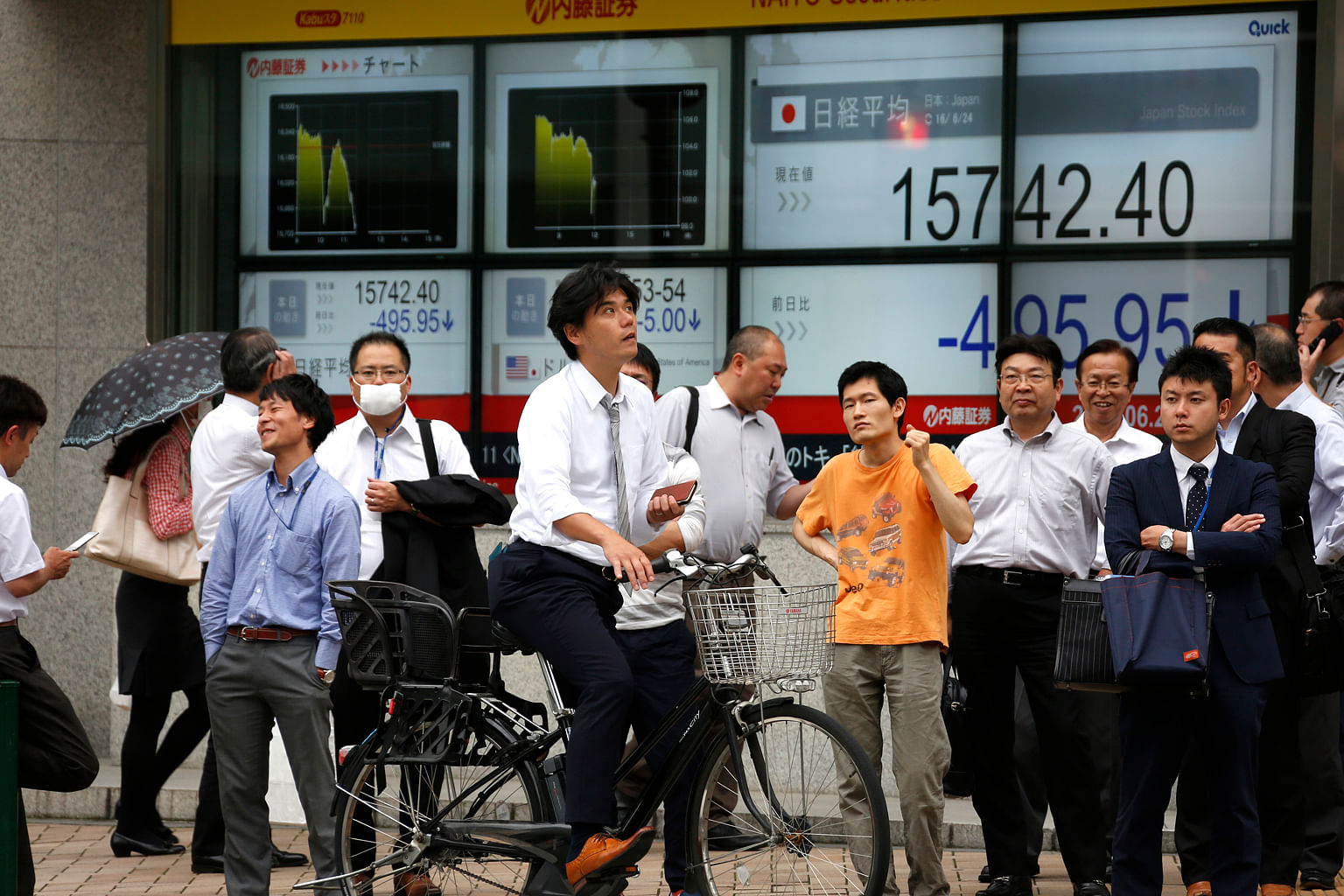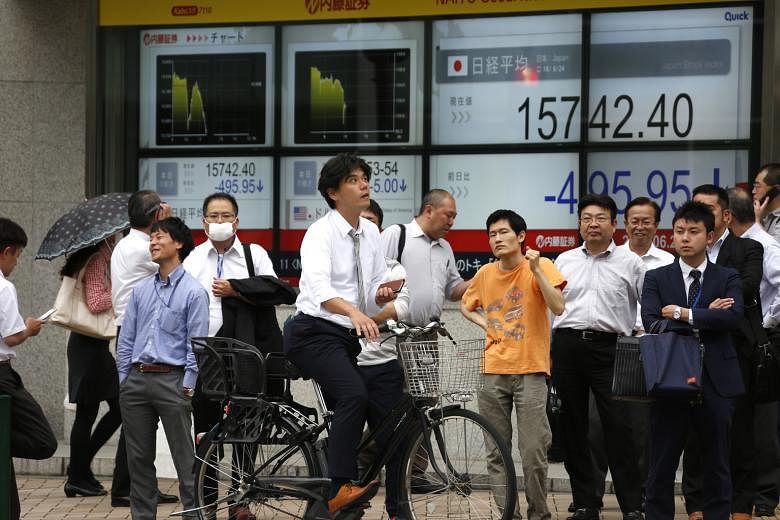The conventional way for most of us to strike it rich in the stock market is to identify undervalued stocks, buy into them and hope that their appeal will eventually be recognised by others.
But the recent market plunge worldwide triggered by Brexit puts a question mark over the relevance of the "buy and hold" investment approach, since it gives the impression that macro- economic and political events have a far bigger impact on stock prices than a company's business fundamentals.
True, Britain may sink into recession as firms move their operations elsewhere, and there will be a shrinkage in trade if the doors to Europe are slammed shut but market fundamentals didn't change on the day the Brexit decision was made.
So, one question we may ask ourselves is why the dramatic sell-off, considering that it will probably take years before Britain can part ways with Europe?
One explanation is the need for big-time traders to unscramble their positions after making huge wagers on Britain staying in the European Union. But that only helps explain the sudden and dramatic falls in sterling and the London stock market.

But Brexit also had a huge impact on the rest of the world. If anything, it must have been puzzling for investors to find both the German and French markets falling by a bigger margin than London's right after the results were announced. Big hits were also taken by Wall Street and Tokyo even though they are geographically far away from the epicentre of the fallout.
There is no way to explain the widespread collateral damage. Even though Britain is the world's fifth-largest economy, that still could not account for the knee-jerk sell-off in the United States and Japan, whose stock markets are still very much domestic-driven.
Instead, traders suggest that Brexit should be viewed in terms of what the high-frequency traders (HFTs) and large institutions were doing about it when the news broke.
This is because HFTs account for up to half of trading activities on any given day in a major market like New York or London, while institutional investors such as hedge funds and banks make up a further 40 per cent of the trades.
Stock markets were originally established to help companies raise money from investors who want to get a better return on their savings.
But in recent years, the complexion of their operations has changed as they morph into vast trading platforms for HFTs who try to make money out of tiny changes in share prices using superfast computers and complicated mathematical algorithms.
And that is the catch: While we are advised to buy and hold our shares for the long term, HFTs may be flipping the same shares for a profit in the blink of an eye, with neither knowledge of nor interest in the stock's underlying business.
HFTs thrive on volatility. This makes them hyperactive when the unexpected, like Brexit, occurs and panic sets in, luring them to front-run the sell orders by other investors, and pushing prices to a lower level than what might have resulted otherwise.
But the selling pressure does not come from HFTs alone. To hedge their bets, most fund managers will put in a sell order known as "stop loss" in order to limit their losses when there is a dramatic drop in stock prices.
Ironically, this only exacerbates the selling pressure on a down day like the one encountered during Brexit, as the huge movements fuelled by HFT trades bring share prices down to stop-loss levels which fuel further high-volume sell-offs by hedge funds and banks.
That, in turn, perpetuates a vicious selling circle that makes the market even more volatile.
In the Brexit sell-off, the resulting volatility caused Wall Street's S&P 500 to tumble about 5.4 per cent in two days, even though most of the revenues from its component stocks came from US consumers and not from British voters.
Weakness on Wall Street was exacerbated by a lack of share buybacks as many US firms were in a blackout period because of the upcoming corporate reporting season and this prevented them from buying their own stocks.
In Tokyo, the stock market had opened higher but there was a subsequent 7.2 per cent plunge in share prices when the Brexit results were announced, as its market had to cope with a sudden surge in demand for yen and a corresponding sell-off in Japanese exporters because New York and London were still not open for trading.
Similarly, frenzied trading by HFTs caused the volume of gold futures traded in New York to surge to around seven times their normal levels in a dramatic flight to safe-haven assets around the world.
Hence, we should not confuse the wild price swings encountered on such a trading session with the likelihood of a new bear market.
Instead, understanding the dynamics of how players like HFTs and hedge funds interact with the market during turbulence will help us to stay calm when everything around us - from CNBC to the Internet - is shrieking to us to sell every stock we own.
What should a "buy and hold" investor do in such circumstances? Ideally, they shouldn't be too concerned about a HFT-fuelled sell-off.
They should be asking themselves if they should add those stocks that had taken a beating from the sell-off to their portfolios.
Indeed, as the shock of Brexit wears off, markets worldwide have staged a spectacular rebound, with share prices recovering a significant chunk of their losses.
Years from now, we are likely to view Brexit as another footnote to market history and one of little consequence to most investors, just like all other events that had once dominated our attention, such as the Sept 11 terrorist attacks in 2001.


